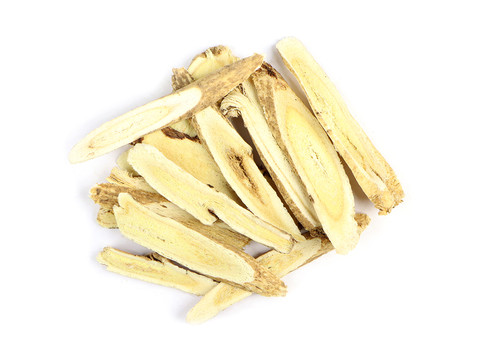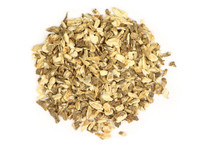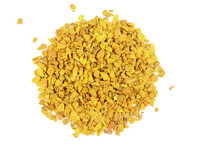-
Product Description
COMMON NAME
Standardized: astragalus
Other: membranous milkvetch, huang qiBOTANICAL NAME
Astragalus membranaceus (Fisch. ex Link) Bunge
Plant Family: FabaceaeOVERVIEW
Astragalus has a rich history of use in Chinese and Asian cultures. It is native to China, Mongolia and North Korea, and is an ancient component of traditional Chinese medicine. The herb was mentioned in the Divine Husbandman's Classic of the Materia Medica, written anonymously during the first century AD and attributed to the teachings of the legendary figure Shennong who is thought to have lived approximately 5,000 years ago.Astragalus is an herbaceous perennial, growing between 25 and 40 centimeters in height. It grows in grassy regions and on mountainsides, requiring plenty of exposure to the sun. When grown for cultivation, the plants are traditionally harvested after four or five years, with the roots collected in spring or fall. The roots are dried in the sun and then sliced for distribution. The slices are yellow in color and have a sweet, moistening taste with a firm, fibrous texture.
PARTS USED
The dried root sliced thin for infusions and extract making.TYPICAL PREPARATIONS
Most authorities on traditional Chinese medicine recommend taking 9-15 grams (3 to 5 tablespoons) of the whole herb per day as a decoction, made by boiling the ground, dried root in water for a few minutes and then brewing the tea. May also be taken in capsule or extract form.SUMMARY
While clinically proven data is lacking, astragalus is widely used in traditional Chinese medicine for a variety of ailments and functions. It is traditionally valued for supporting healthy immune function and has been observed to support the heart in healthy subjects.PRECAUTIONS
No known precautions.
We recommend that you consult with a qualified healthcare practitioner before using herbal products, particularly if you are pregnant, nursing, or on any medications.This information has not been evaluated by the Food and Drug Administration. This product is not intended to diagnose, treat, cure, or prevent any disease. For educational purposes only.
-
Product Reviews
-
Find Similar Products by Category








